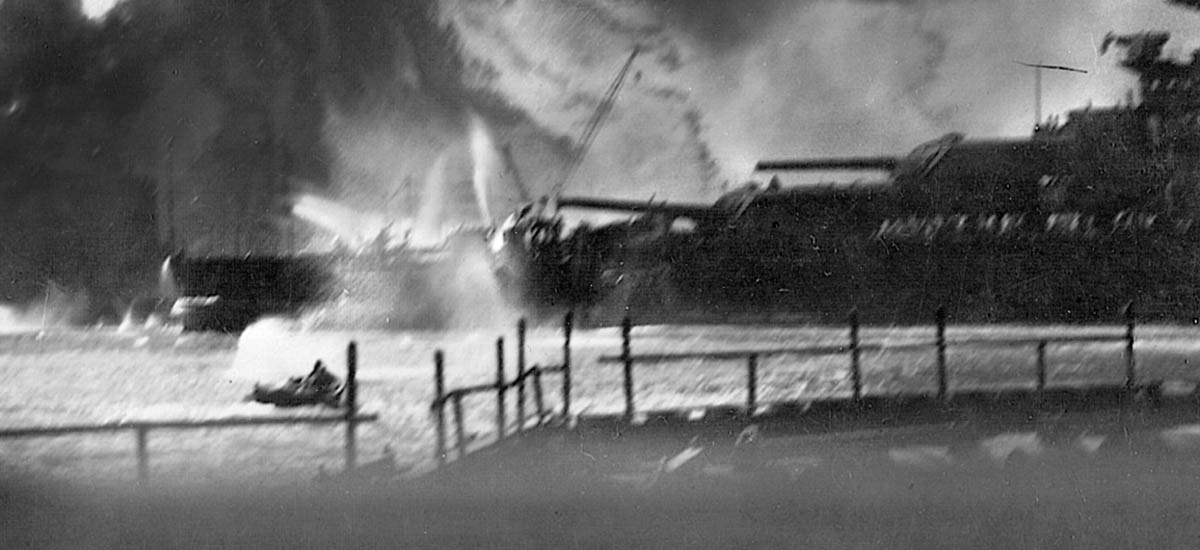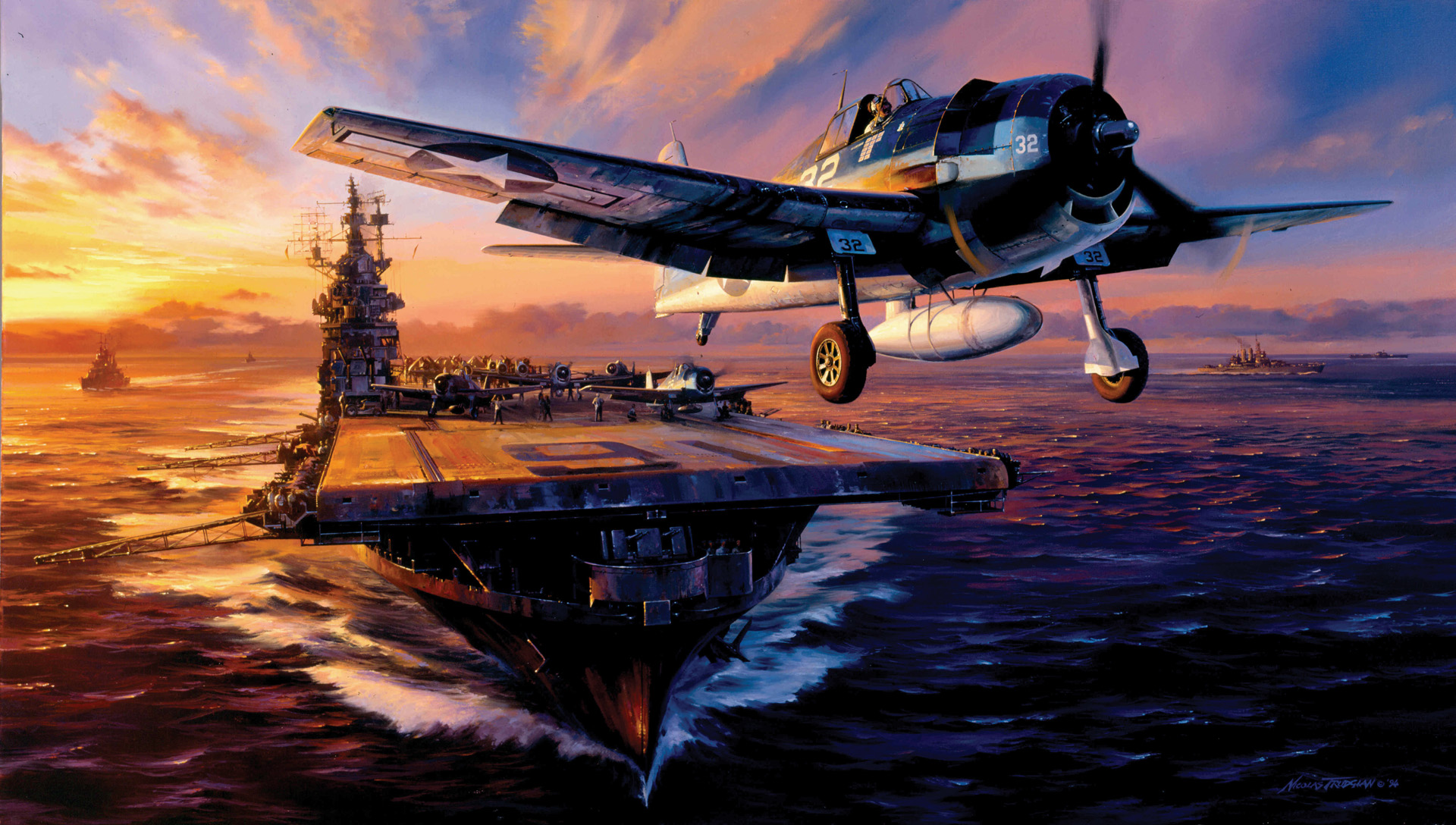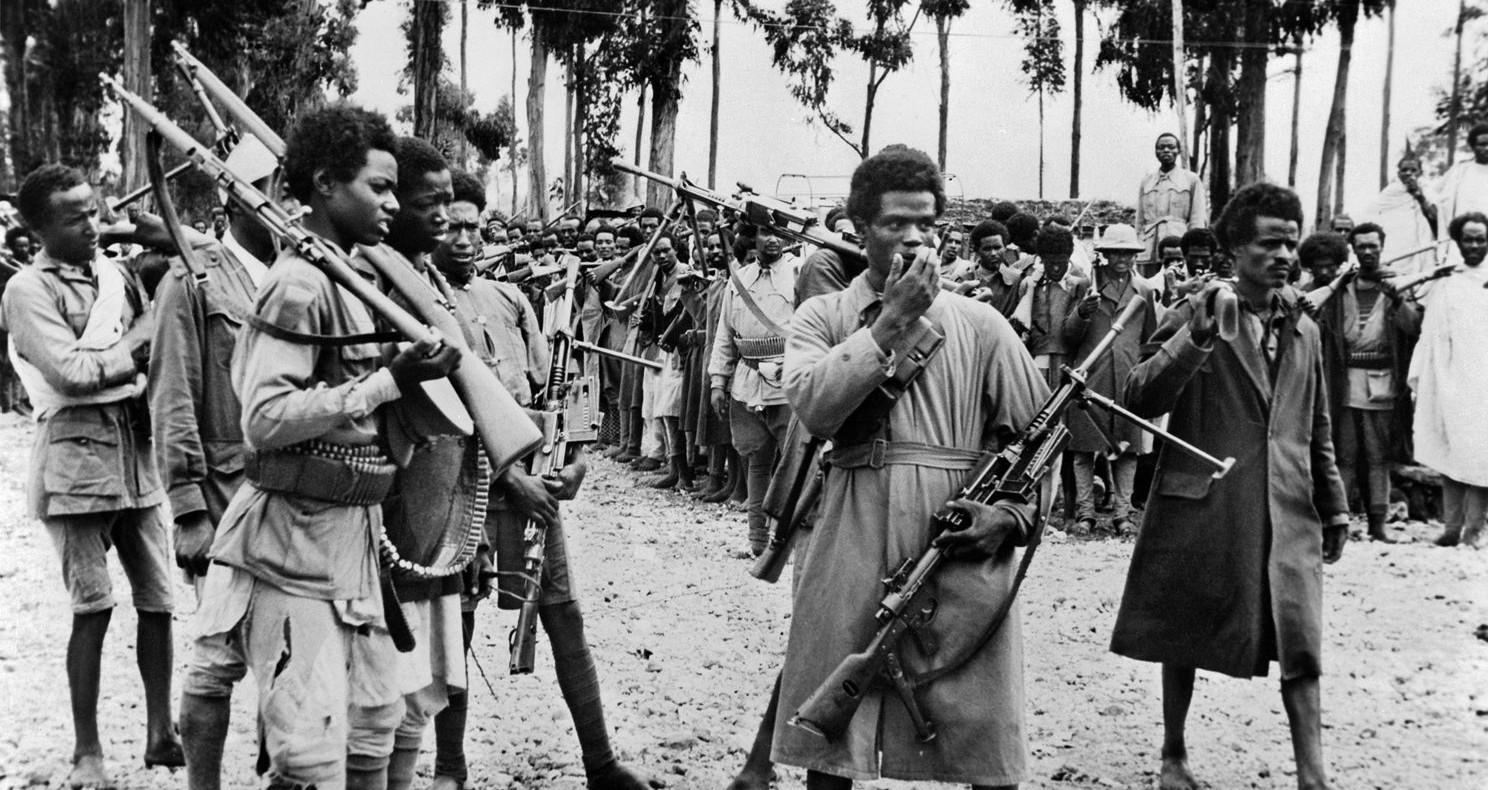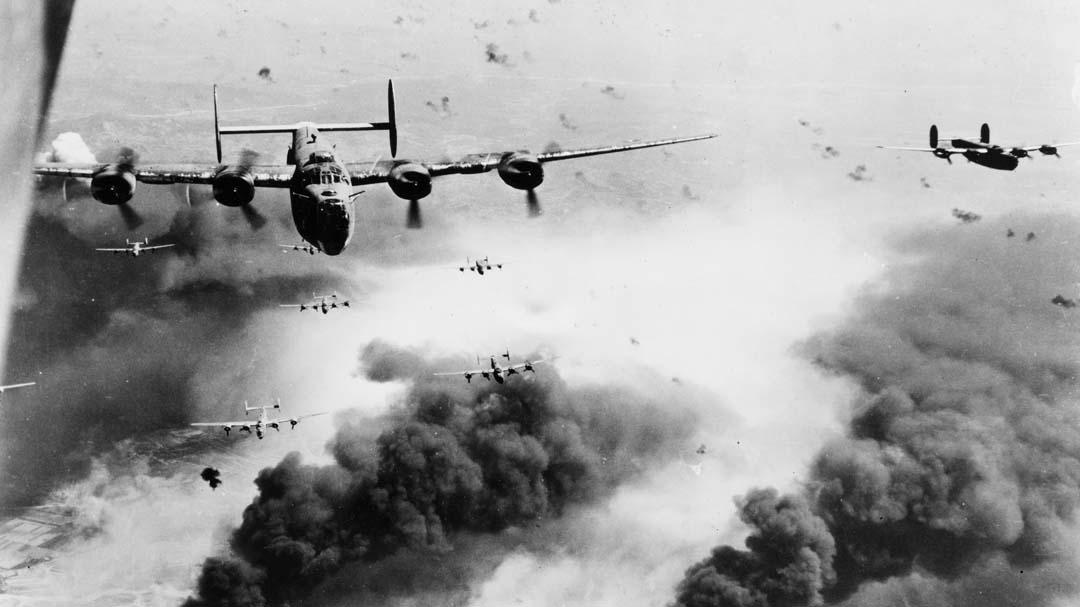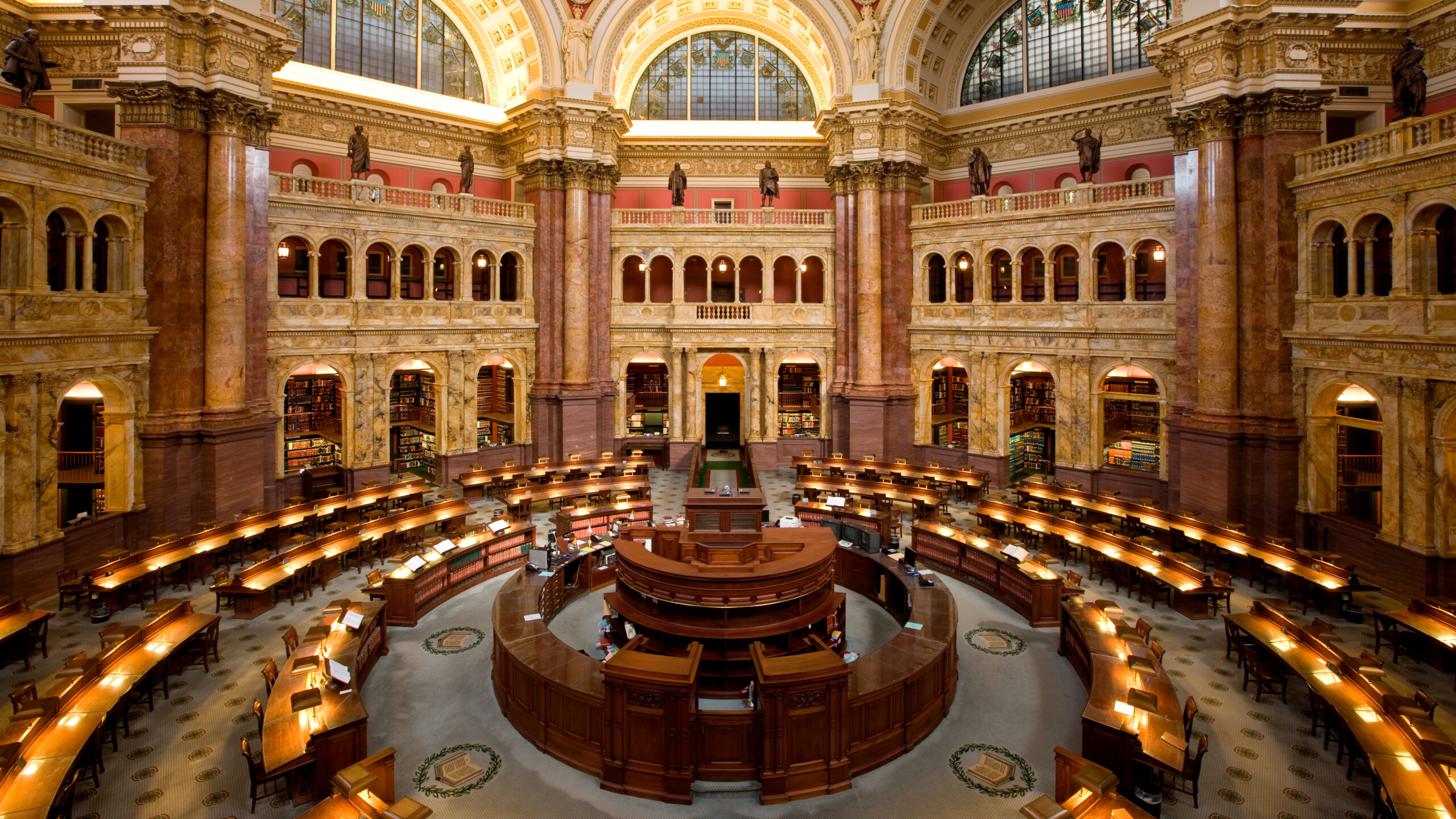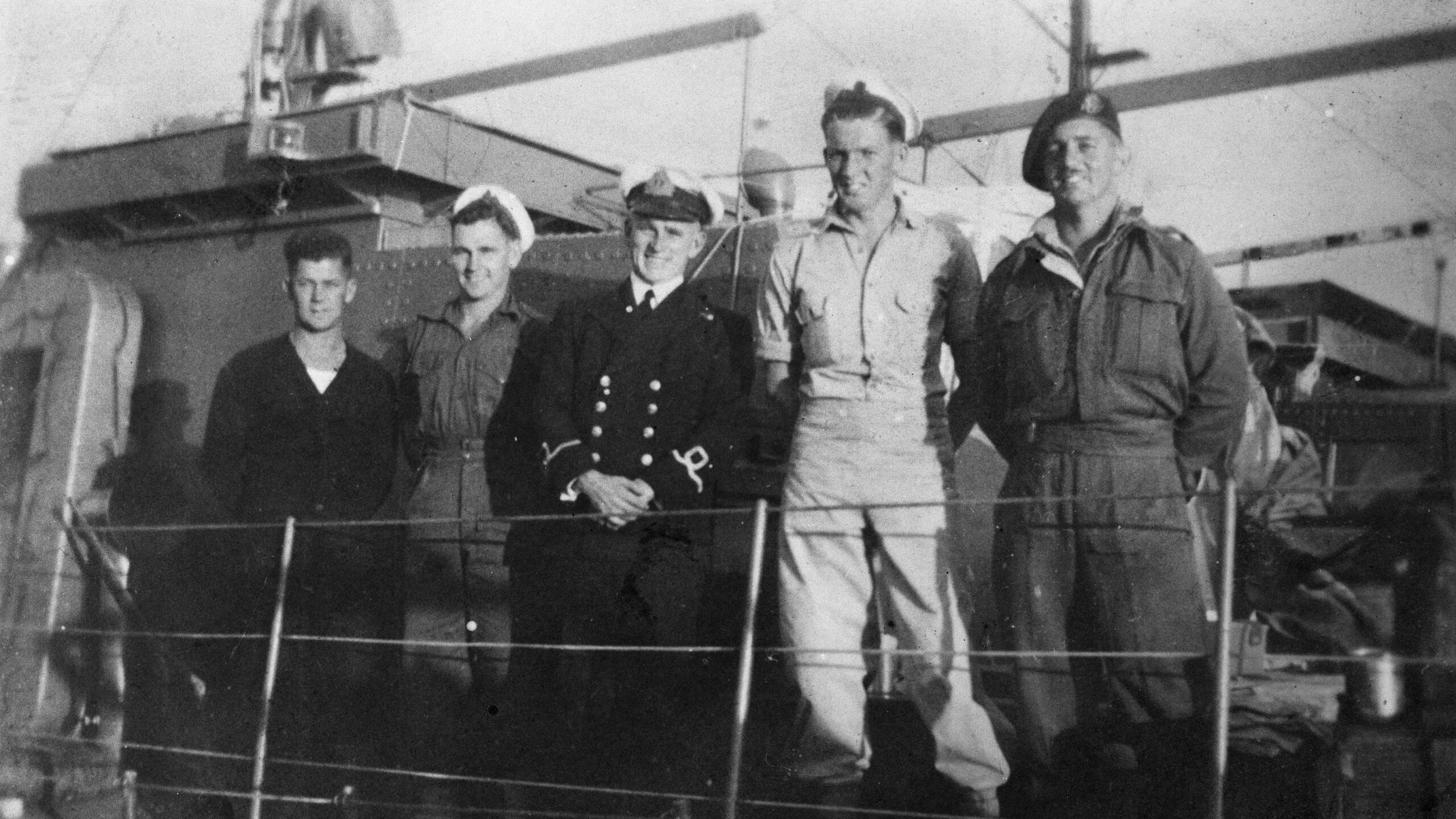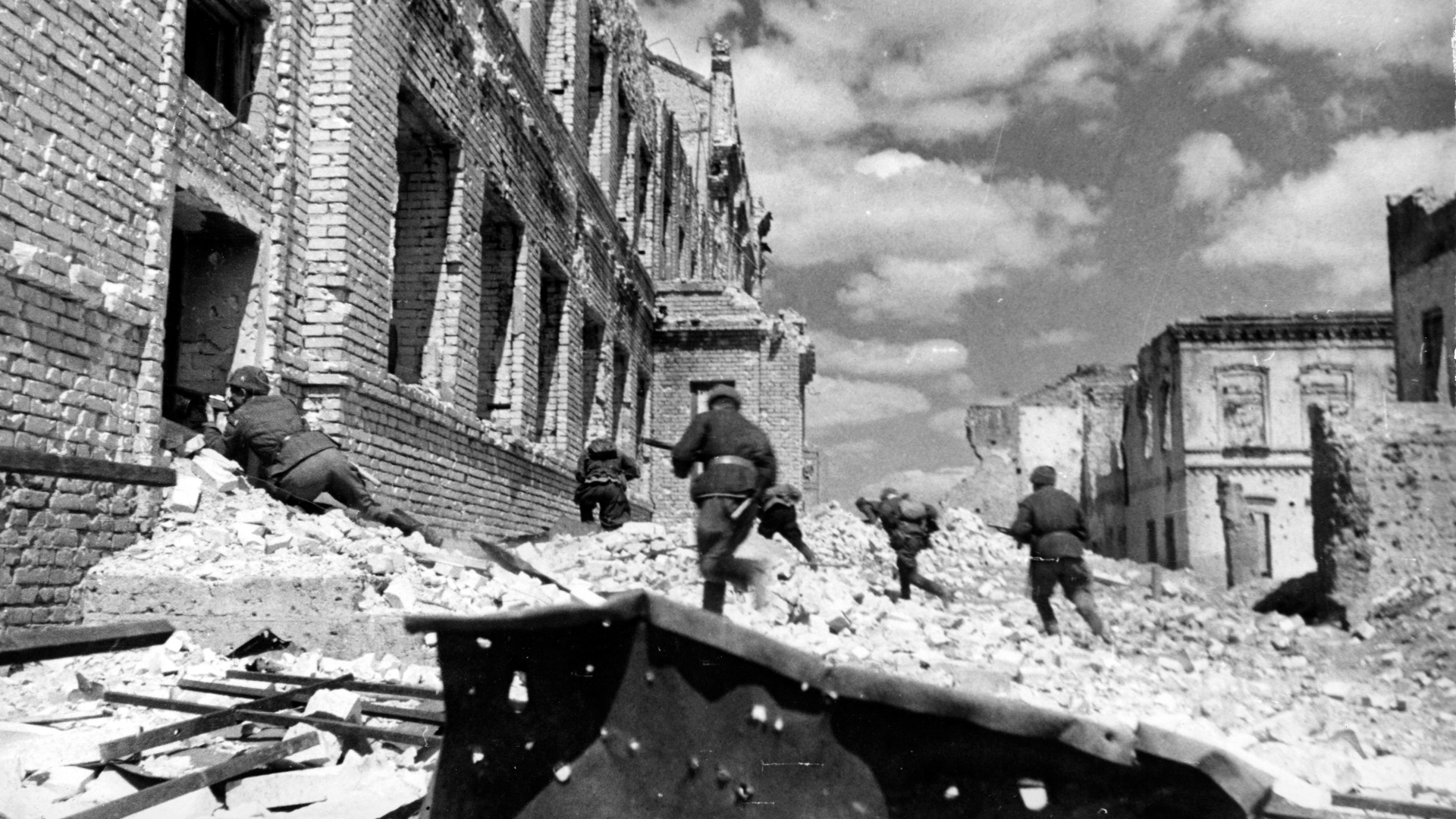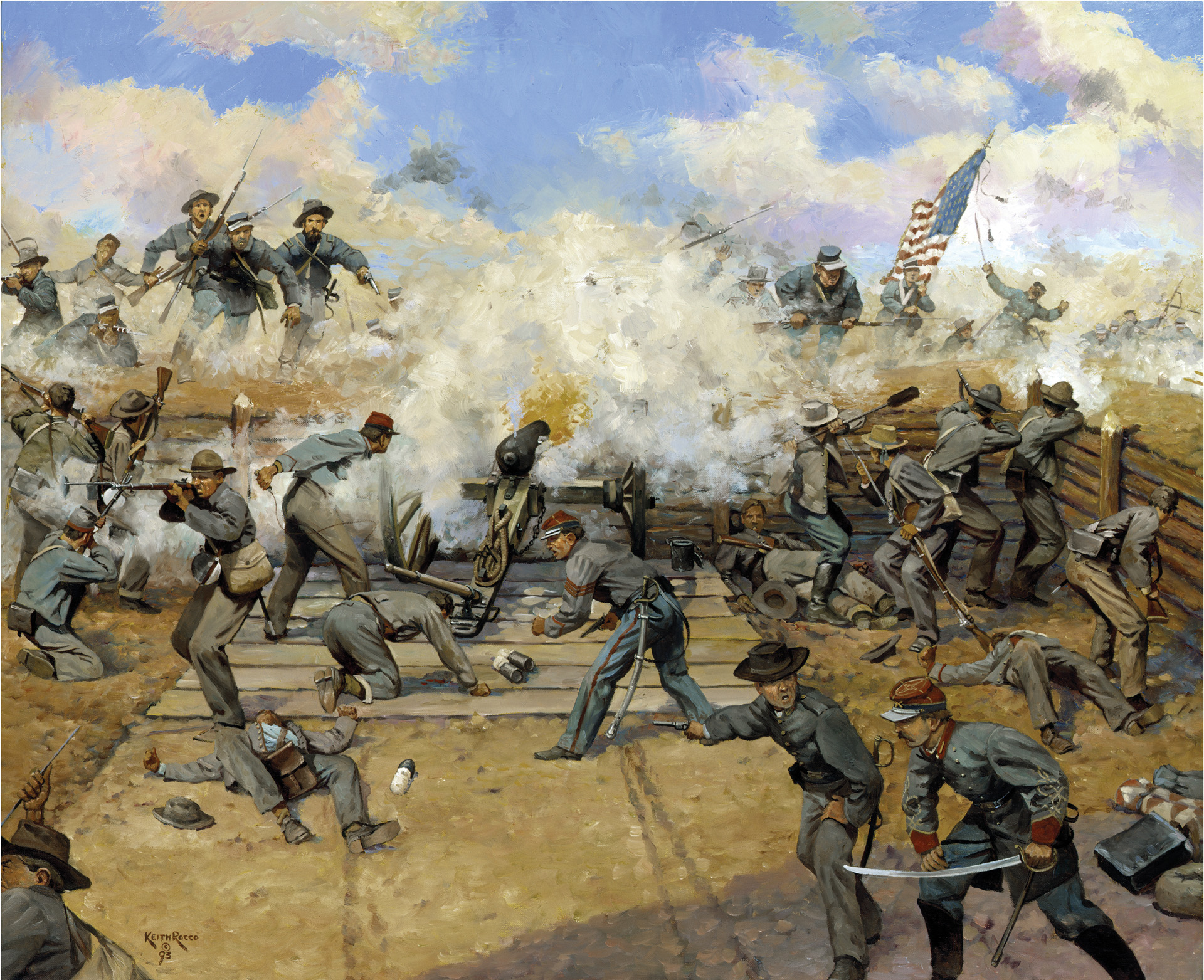Fort MacArthur in San Pedro, California was established by the U.S. Army in 1914 as a Coast Artillery installation to defend the harbors of Long Beach and Los Angeles. During both world wars, the facility also served as an Army training and induction center. In the 1950s missiles replaced the guns, and they protected the airspace above the Los Angeles area through the 1970s. Today, Fort MacArthur is operated by the City of Los Angeles Department of Recreation and Parks as a historic site and museum honoring six decades of active military history. Inside the park’s Battery Osgood-Farley, a former battery for two 14-inch disappearing carriage guns, are exhibits featuring uniforms, weapons, and equipment that tell the story of a time when the site was a U.S. Army post. But one artifact in the museum’s collection tells a different story—one that unfolded 4,120 miles away from San Pedro. That artifact is an unexceptional Revere Model 88 motion picture camera that did something exceptional on Sunday, December 7, 1941, when it was used to film 8mm color footage of the Japanese attack on Pearl Harbor.
At the time, the camera belonged to Technical Sergeant Harold S. Oberg and his wife Eda. The previous year, the couple departed San Francisco for the Pacific on the U.S. Army Transport Grant—destination: the Philippines. There, Sergeant Oberg was to report for his new duty assignment at Clark Army Airfield on Luzon. But during the voyage Eda became violently seasick—so seasick that Sergeant Oberg’s commanding officer decided it would be best if she went ashore to recover when the ship made a brief port call at Pearl Harbor.
While she was recovering, Sergeant Oberg’s orders were changed, and he was reassigned to the headquarters of the 11th Bombardment Group at nearby Hickam Army Airfield. The couple was then assigned quarters on 16th Street in the post’s senior enlisted housing area. Their new home was a two-story apartment in a C-shaped building that was then only a few years old.
After moving in, the couple began their new life in the tropical paradise. The island’s scenery made such an impression on the Obergs that they decided to splurge and buy a handheld camera to shoot home movies. That is when they purchased the Revere Model 88 that is now a part of the collection at Fort MacArthur.
At 7:55 on the morning of December 7, the sounds of low-flying aircraft and explosions rudely interrupted what should have been a peaceful Sunday morning. Eda and Harold rushed to one of the two windows in the master bedroom and looked out just in time to see a Nakajima B5N Type 97 carrier attack bomber pass overhead on its approach to release a torpedo at one of the ships of nearby Battleship Row.
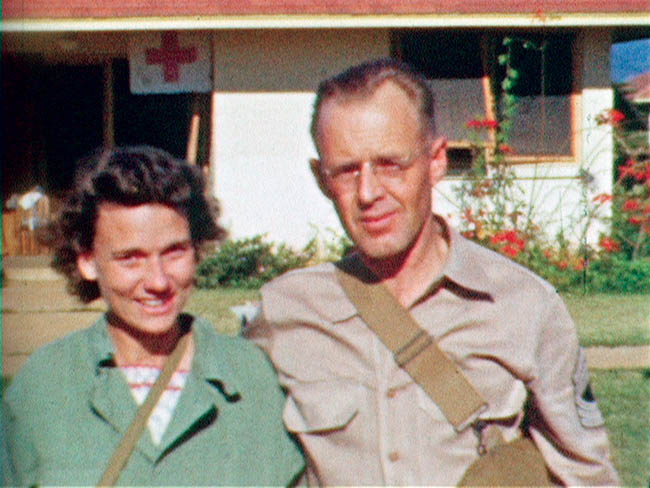
Although the Obergs lived on post at Hickam Army Airfield, their quarters on 16th Street stood quite close to the Pearl Harbor naval base. In fact, the distance from the apartment to the mooring berth of battleship USS Arizona (BB-39) was just under a mile and a half.
The close proximity of their apartment to this important target of the Japanese attack was such that torpedo bombers from the first wave passed directly overhead on their way there. When Harold recognized the insignia of the rising sun, he turned to Eda and said, “This is the real thing!” and with that dashed off to the closet to put on his uniform. On the way out the door, he told Eda, “Stay under cover!” and then sped off in the couple’s car toward the flight line to report for duty.
Shortly after Sergeant Oberg departed, the first wave of the attack came to an end and Eda stepped outside thinking that it was over. She noticed that most of the apartments on 16th Street were empty and the doors wide open, and she could see thick black smoke rising from several points in the direction of the naval base.
That’s when she remembered the Revere Model 88 motion picture camera. Although photography on Hickam was prohibited, Eda felt that the exceptional and historical circumstances that day created an exception.
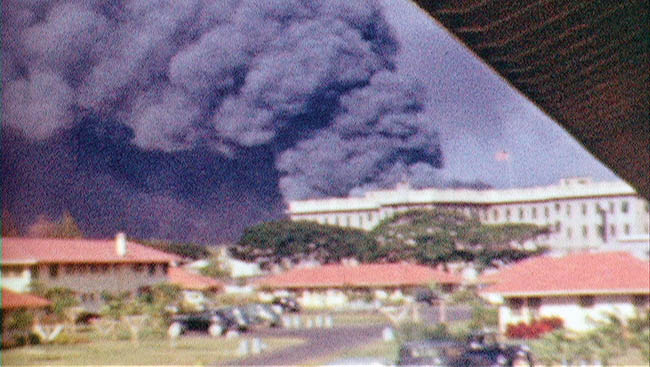
Before she could begin filming, however, the second wave of the attack began, and that drove her back toward the apartment for safety. She then noticed women and children running down 16th Street away from the naval base, and she motioned for some of them to come into the apartment for shelter even though she had never seen them before. Only then did Eda begin filming.
Her initial two shots were from the window of the master bedroom looking toward Ford Island. The first focused on a massive plume of black smoke rising from the battleship USS California at Berth F-3, the southernmost berth of Battleship Row; the second faced straight north toward smoke clouds rising from the wrecks of the battleships USS Oklahoma at Berth F-5 and USS Arizona at Berth F-7. Eda then proceeded downstairs, walked out into the courtyard, and filmed one shot over the roof of the northern wing of the apartment building.
The time was shortly after 9:30 am on December 7, and the shot captured a thick cloud of black smoke from the burning Mahan-class destroyer USS Shaw, which had exploded spectacularly a few minutes earlier in floating drydock YFD-2.
After recording that brief shot, Eda continued across the courtyard to the northern wing of the building and entered the apartment occupied by Kay and Staff Sergeant John H. Honour; he was the senior NCO in charge of Hickam’s control tower. Eda then climbed to the upper floor and recorded two shots facing Porter Avenue and the Marine Barracks on the naval base, a building known as Puller Hall today. In the distance, smoke could be seen rising from the area of Drydock Number 1 where the destroyers USS Cassin and USS Downes and the battleship USS Pennsylvania burned 1,000 yards away to the northwest.
Just as the second wave of the Japanese attack was ending, MPs came to the housing area on 16th Street warning the residents to leave Hickam in the interest of safety. With only a few minutes at her disposal, Eda darted back inside the apartment and grabbed some cash and a blanket, but before leaving she wrote Harold a quick note on the back of an envelope and left it behind along with the Revere Model 88. She then left Hickam Field, riding in silence with Kay Honour and Dorothy Norris, another neighbor from the building. The three women first stopped at Tripler Army Hospital, but they were quickly sent from there to Hemenway Hall on the campus of the University of Hawaii.
Throughout the second wave of the Japanese attack, Sergeant Oberg had remained on duty at 11th Bombardment Group Headquarters at Hickam’s flight line about 1,000 yards to the southwest of his apartment on 16th Street. Shortly after the raid concluded, he returned home to check on Eda.
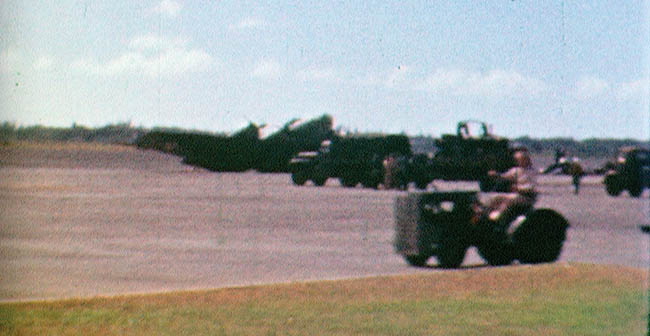
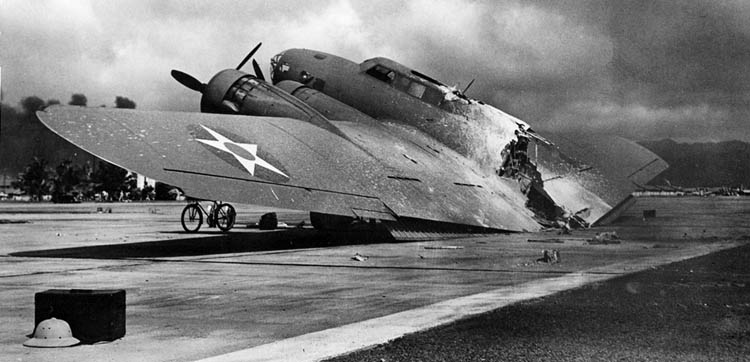
When he entered the apartment, he quickly noticed the note and the camera. Secure in the knowledge that Eda was safe, Sergeant Oberg then drove back to the field, but he didn’t do so empty handed. He wanted to document what had happened too, and so he took the camera with him. His neighbor from across the courtyard, Staff Sergeant Honour, then admitted Oberg to the base operations building and led him up to the tower’s roof. Once there, Oberg began filming.
His opening shot faced north toward Hangar Number 2 with a thick cloud of black smoke rising from USS Arizona in the background, two miles away. Then Oberg panned the camera left to reveal even more smoke rising from the burning wreckage of the battleships USS Oklahoma and USS Maryland, as well as the Tennessee-class battleship USS California.
As he continued panning, Hickam’s flagpole entered the frame with the field’s distinctive 171-foot tall octagonal water tower in the background beyond it. After sweeping past the airfield’s hospital building, the well-known 3,200-man barracks nick-
named the “Hickam Hilton” came into view. Oberg’s shot even captured bomb damage to the building’s roof.
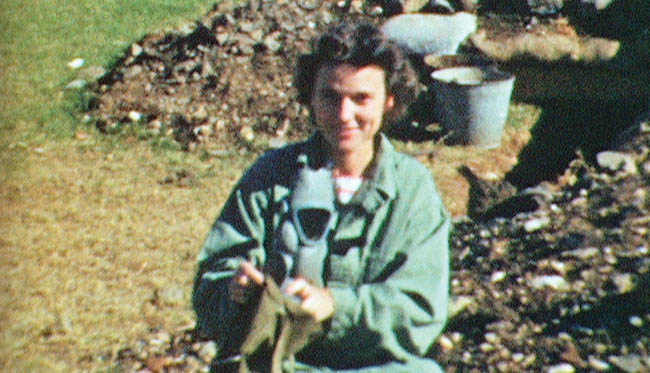
From that spot, smoke from burning drums of aviation fuel could be seen rising skyward just to the west of Hangar Number 3, and as the camera swept past Hangar Number 5, Douglas B-18 Bolo medium bombers could be seen parked on the tarmac in the distance near Hangar Number 13.
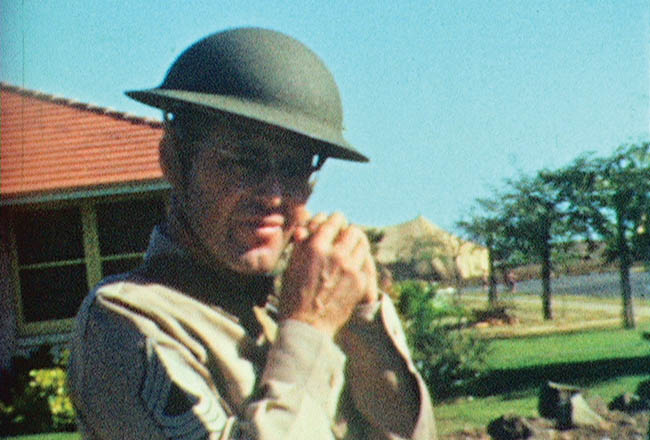
Oberg’s shot eventually even captured the severed fuselage of B-17C #40-2074—a B-17 Flying Fortress from the 38th Reconnaissance Squadron that had been piloted by Captain Raymond T. Swenson earlier that morning. As one of 12 B-17s scheduled to land at Hickam on December 7, Swenson’s #2074 arrived over Oahu with no ammunition and low on fuel in the middle of the air raid just after 8 am.
During final approach to land, two Japanese Mitsubishi A6M2 “Zero” fighters strafed the aircraft, setting off a box of flares that eventually burned the aircraft’s empennage to the point that the weakened structure buckled and broke away while taxiing.
Sergeant Oberg then moved from the roof of the Operations Building down to ground level and filmed #2074 from the grass next to the building. Honolulu photographer Tai Sing Loo later captured the wreckage of Swenson’s B-17C in one of the most memorable images taken in the aftermath of the attack.
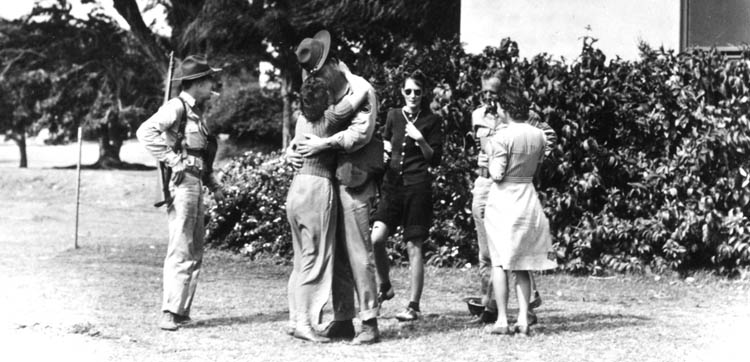
Together Eda and Harold Oberg had captured color footage of one of the most important days in American history—Sunday, December 7, 1941—but their story and their footage did not end there. They remained separated in the days that followed the Japanese attack with her at the University of Hawaii and him on duty at Hickam.
On December 17, after the newspaper published a list of where the spouses of service members were staying on Oahu, Harold drove to the university with Staff Sergeant Honour and Staff Sergeant Dean V. Norris, another resident of the apartment building on 16th Street. When the three couples were reunited on campus right in front of Hemenway Hall, an Army photographer snapped a shot just as Dean and Dorothy Norris embraced.
A few days after that, Eda and Harold broke out their movie camera again to film an underground air raid shelter that was dug in an open courtyard across 16th Street from their quarters.
In the first shot, Harold filmed Eda as she emerged from the bomb shelter wearing HBT coveralls, a civilian gas mask, and an M1917A1 helmet. The camera then changed hands, and Eda filmed Harold fastening the chinstraps of his M1917A1 helmet. Harold then filmed Eda and Kay Honour in the front yard of their quarters with 16th Street behind them and closed out the film reel with a well-composed and especially poignant shot of a 48-star American flag.
One month later, as the spouses and dependents of service members were being evacuated from the Territory of Hawaii, Eda returned to California—but not by sea. Fully aware of the misery created by her intense seasickness, the family chipped in and purchased a one-way ticket to San Francisco for her on Pan Am’s Honolulu Clipper.
Harold returned to California several months later and brought the Revere 88 motion picture camera with him—along with the reel of color 8mm film with its images of the Japanese attack on December 7, 1941.
Harold died on New Years Day, 1963, of a heart attack, and Eda eventually remarried and moved back to San Pedro—her hometown. In the mid-1980s, she donated all of her memorabilia from December 1941 to the Fort MacArthur Museum, including a scrapbook of photographs, the Revere Model 88 camera, and the reel of color film that had captured one of the most infamous moments in American history. These items are currently on display there in the Battery Osgood-Farley Historic Site.
Eda passed away in 1995, but she left behind a legacy in this remarkable story. Although it may not be a particularly well-known chapter in Pearl Harbor history, that story is nevertheless preserved by Fort MacArthur and, because of that, it will not be forgotten.
